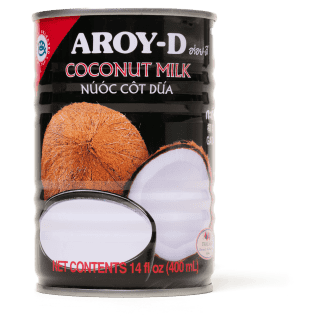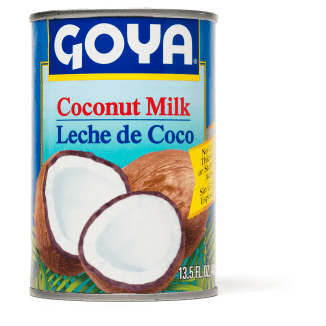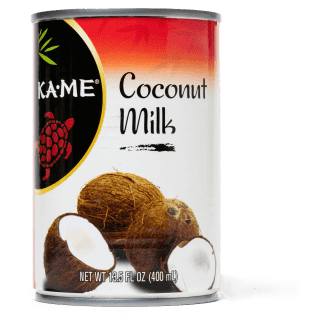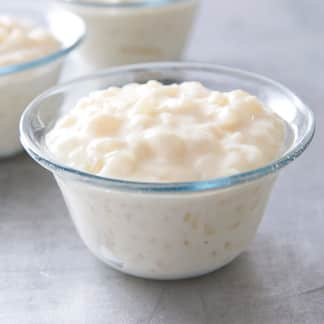If you crack open a coconut, the thin liquid that pours out is coconut water. It has gained recent popularity as a sports drink, but we don’t have much use for it in the test kitchen. We also tend to stay away from cream of coconut, the extra-thick and sweetened stuff, unless we’re making a tropical cocktail. Instead, the test kitchen’s go-to coconut liquid is coconut milk. It’s made by shredding fresh coconut meat and pressing it to extract liquid, sometimes adding a small amount of water to help the process. Coconut milk is a key ingredient in many puddings and pies and a staple in Southeast Asian soups, sauces, curries, and stir-fries.
Before we even got to tasting, though, we were surprised by the dramatic differences among the products when we opened the cans.
When we last reviewed coconut milk, we preferred regular, full-fat versions to light alternatives and named Chaokoh, an ultracreamy Thai import, our winner. To find out if any new contenders could best our old favorite, we rounded up seven products. We sampled them three times in blind tastings: plain (to get a sense of their differences) and then in coconut rice pudding and Thai-style chicken soup.

Before we even got to tasting, though, we were surprised by the dramatic differences among the products when we opened the cans. Although we think of it as a single ingredient, coconut milk is technically an emulsion of coconut oil, coconut protein, and water. Because coconut oil solidifies into coconut cream at room temperature, canned coconut milk generally separates into two distinct layers: liquid water at the bottom and solid white cream at the top. The cream in some cans was as heavy and dense as Crisco, while in others it had a looser consistency. The colors ranged from gray to snowy white. The liquid also varied. In some cans, it was opaque and smooth in consistency. In others, the liquid was cloudy, with little specks of cream. And, to our surprise, the ratio of cream to water differed in each product. When we separated the two components, some had a roughly 50/50 balance, while others contained almost no liquid.

Why so different? It turns out that the U.S. Food and Drug Administration doesn’t regulate the term “coconut milk,” and each manufacturer is able to set its own standards on how concentrated and/or fatty its product might be. (There are also no standards for how ingredients appear on the label. Two products listed “coconut extract” instead of “coconut milk” on their labels, but after talking to experts we concluded that these were one and the same.) Some factors (such as the amount of water added) are easy for manufacturers to adjust, but Dr. Nattapol Tangsuphoon, a professor of food science at Mahidol University in Thailand, told us that some factors, such as the variety and age of the coconuts, are harder to control. Younger coconuts contain less fat, resulting in a leaner coconut milk. Temperature abuse during shipping and storage is also a “major reason for inconsistent appearance,” according to Dr. Tangsuphoon, because it can cause crystallization and break the emulsion of oil and water.
Not surprisingly, texture proved important in our tastings. For the most part, the rice puddings all came out acceptably thick and creamy. But when we tasted the coconut milks in Thai chicken soup, we saw big differences. Our least favorite products were thin and watery or separated quickly and made soups that were thin and dotted with greasy pools of oil. Our tasters much preferred samples that were creamy, full-bodied, and didn’t separate too quickly. As for flavor, products lost points if the coconut flavor was too mild or had an “artificial,” “sunscreen-y” aroma and taste. Our favorites had fresh, vibrant coconut flavor and a smooth, creamy texture.

Most companies were unwilling to disclose information on coconut variety or harvest and manufacturing methods, and the packaging offered few clues. Every coconut milk we tasted had the same main ingredients: coconut and water. The inclusion—or exclusion—of stabilizers or emulsifiers didn’t track with our results. We generally preferred products with more fat per serving, but that didn’t track perfectly either. Sweetness was a better indicator. Our top three scorers have some of the largest amounts of naturally occurring sugar per serving, between 1.8 and 2.7 grams per ⅓-cup serving. The only other product with a similar sugar content was downgraded for egregious textural issues.
Ultimately, six coconut milks had the full, fresh coconut flavor; natural sweetness; and rich, thick consistency required to earn our full recommendation. Our new winner, Aroy-D Coconut Milk, won top marks for a velvety consistency that was creamy but not too thick. Made with just coconut and water, this Thai import was “clean,” “aromatic,” and “balanced.” Best of all, it was the least expensive product in our lineup.
- Taste plain (stirred gently before portioning)
- Taste in Coconut Rice Pudding
- Taste in Thai Chicken Soup
- Measure the ratio of thin coconut milk to rich coconut cream
- Fresh coconut flavor and aroma
- No competing off-flavors
- Rich, creamy texture both plain and in recipes














